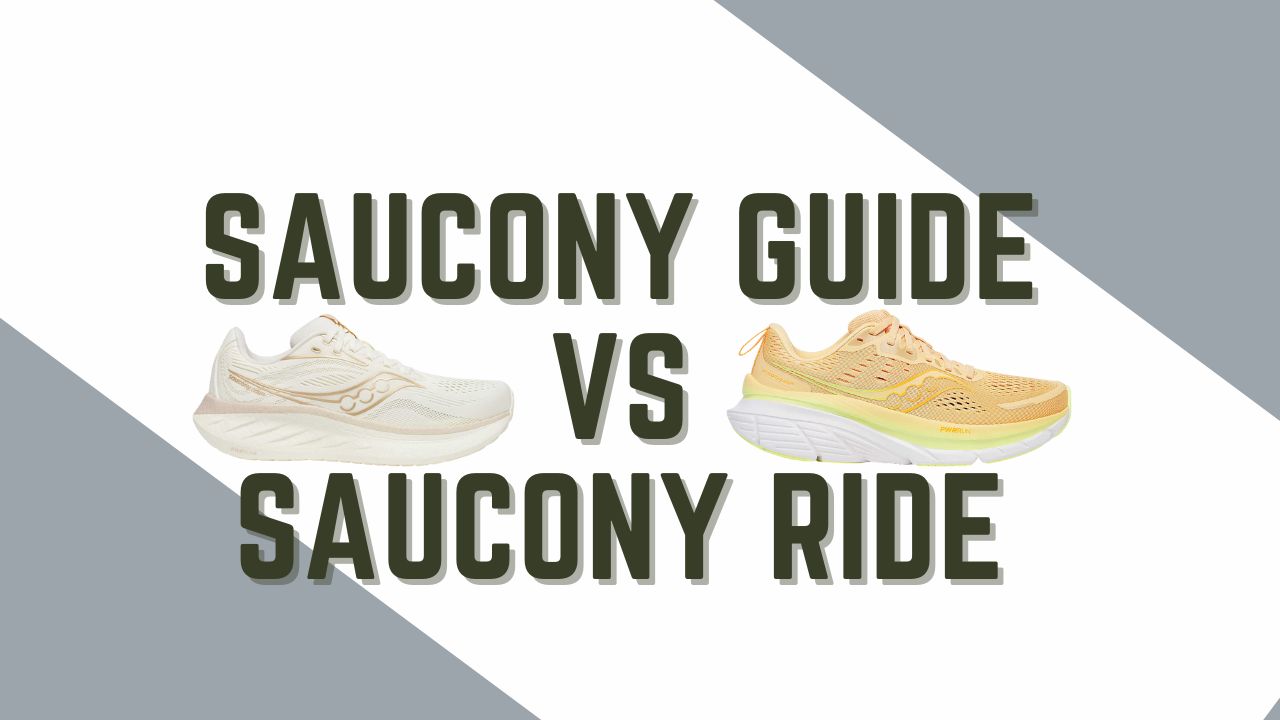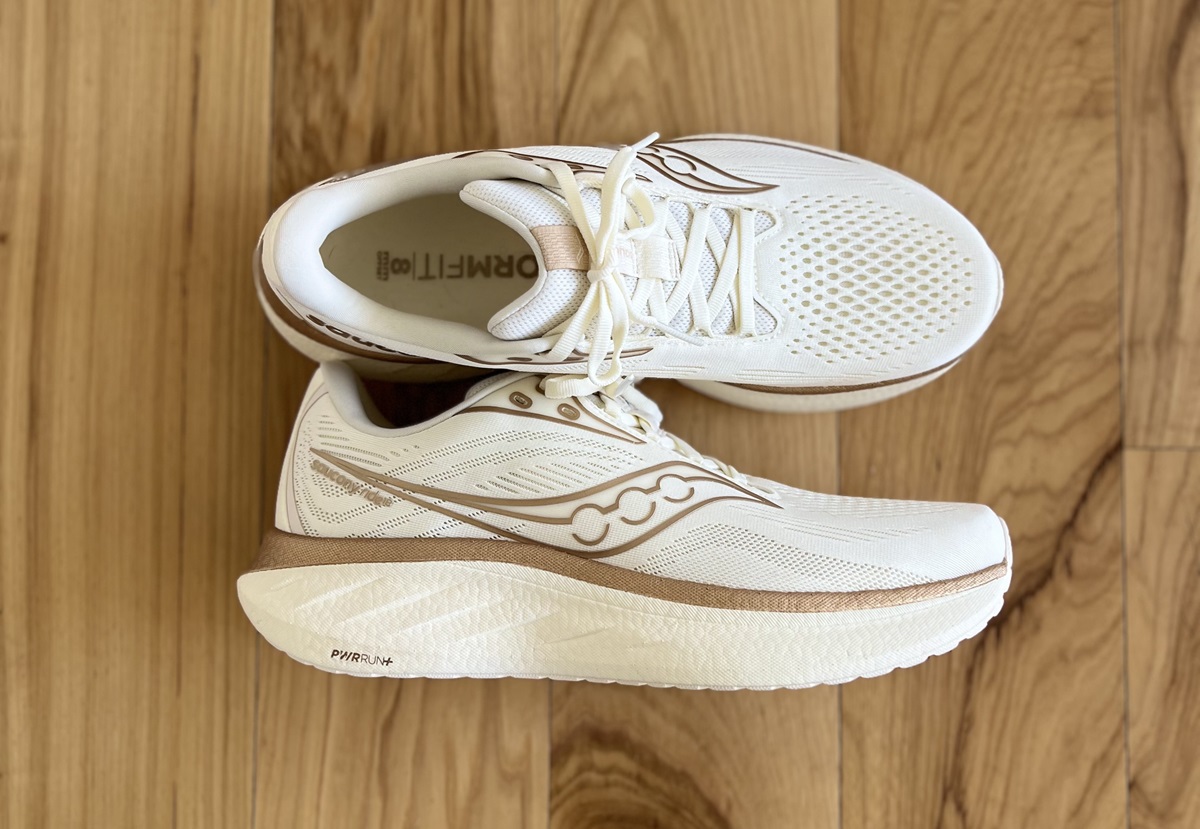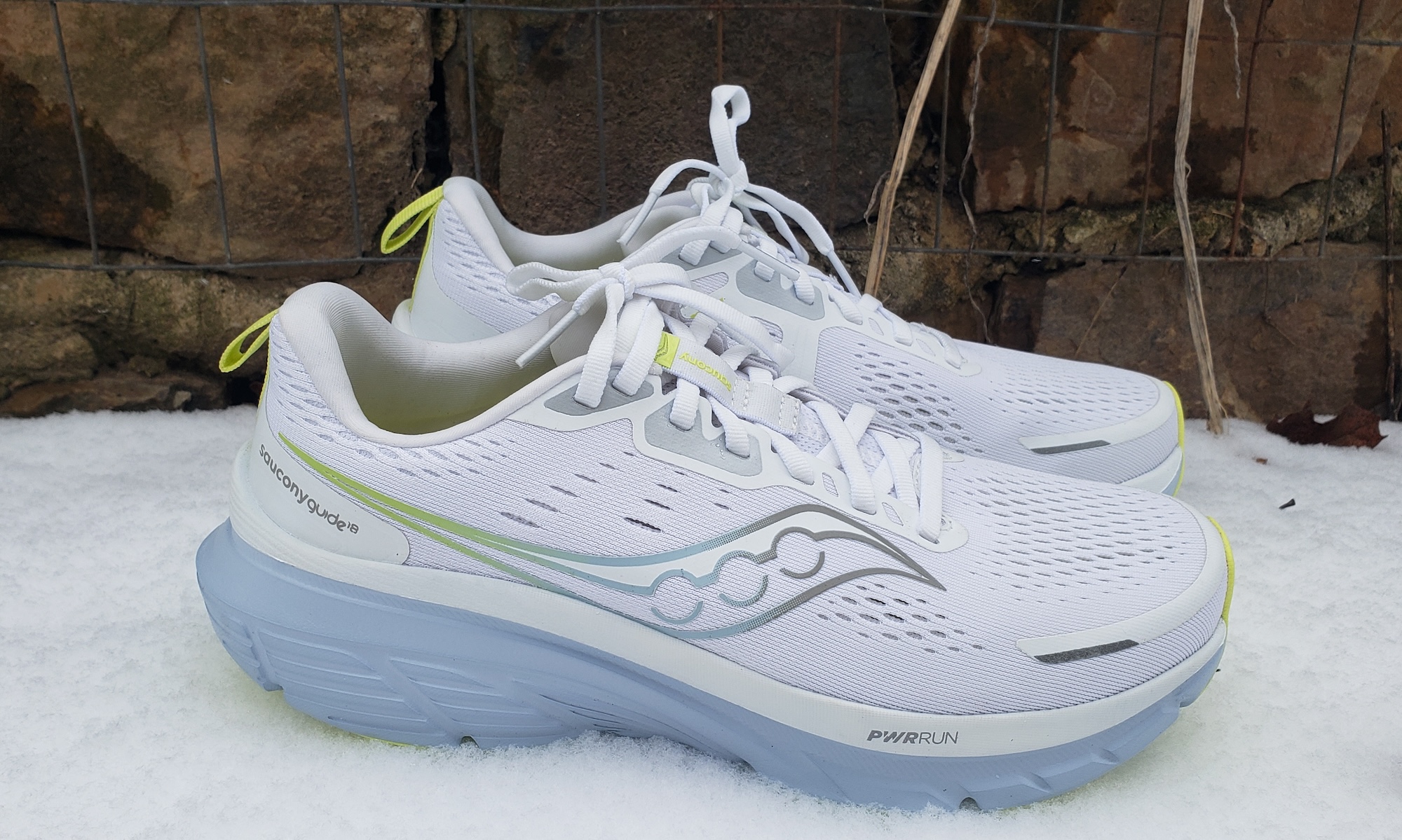Finding the perfect running shoe can be a daunting task, but narrowing down your options can make the process easier. If you’re considering a shoe from Saucony, you may be torn between the Saucony Ride vs Saucony Guide. While both shoes are designed to provide a comfortable and supportive running experience, they have different features that cater to different types of runners.

Depending on your foot type and running style, one shoe may be a better fit for you than the other.
I’ve spent some time running in both shoes, alongside the Saucony Kinvara 16, the Saucony Triumph and the Saucony Endorphin Shift! WHEW these legs are putting in some testing miles. My goal in trying a number of models is to try and find the differences to help you make a selection.
In this article, we’ll compare the Saucony Ride vs Saucony Guide to help you determine which shoe is the right choice for your needs. Truly, of the shoes mentioned above these two are definitely the most similar.
And because I personally wanted to know, we’re also going to throw in a comparison of the Saucony Triumph! It’s often lined up next to the other two, so why not see what’s different.
When to Choose the Saucony Guide Vs Ride
All right so, looking at just the basic details these two shoes are REALLY similar. Same weight, same heel drop, roughly the same amount of cushion. In previous models, there were more things like weight or big differences, but these two seem to be drawing closer together.
So let’s see if we can provide a few more details to help you make a decision.
Pronation Control
The Saucony Guide is designed for runners who overpronate, meaning their foot rolls inward excessively during each stride. The shoe has a medial post that provides additional support to the arch of the foot and helps to control pronation. If you need more stability and guidance due to overpronation, the Saucony Guide may be a better choice than the Saucony Ride.
Added Support
The Saucony Guide has more structure and support in the upper compared to the Saucony Ride. It also has a firmer midsole that provides more stability and support. If you have flat feet, or if you need more support due to injury or other factors, the Saucony Guide may be a better choice for you.
Firmness
The Saucony Guide has a firmer ride than the Saucony Ride due to its medial post and firmer midsole. This can be beneficial for runners who prefer a firmer feel or who need more support.
Distance
The Saucony Guide is designed for longer distances and provides more support and guidance over the course of a run. If you’re training for a marathon or other long-distance race, the Saucony Guide may be a better choice for you.
Saucony Guide vs Saucony Ride Overview
The Saucony Ride is a neutral shoe that provides a smooth and comfortable ride, while the Saucony Guide is a stability shoe that offers additional support and guidance. Depending on your foot type and running style, one shoe may be a better fit for you than the other.
Saucony Ride 18
The Saucony Ride is a versatile neutral running shoe that provides a smooth ride for runners. It is designed for runners who want a neutral shoe with moderate cushioning, a responsive ride, and a comfortable fit.
If you already know that you want MORE cushion then the Triumph is going to be your neutral shoe of choice. Of the three, it’s the shoe that I recommend most for long distance runners.
 It’s not flashy, it doesn’t have huge selling points, it’s just a trainer that feels pretty nice and will last!
It’s not flashy, it doesn’t have huge selling points, it’s just a trainer that feels pretty nice and will last!
While it’s not a stability shoe, we’ve always found the Ride to have some elements which inherently make it feel more stable.
You could certainly do some speed work in this shoe, but it’s probably not what we’d reach for on those days. It doesn’t feel fast, but you aren’t held back by mounds of cushion either. Again, it reminds us of what ALL running shoes used to feel like, but with nicer cushion.
- Weight: 9.1 oz Men’s, 8 oz Women’s
- Stack: 35 mm
- Heel toe drop: 8mm
- Available in fifteen colors (wowzers)
- Available in Wide
- Available at Saucony.com $140
- Read our full review of the Saucony Ride 18 here >>
Saucony Guide 18
On the other hand, the Saucony Guide is a stability running shoe that is designed for runners who need more support and guidance. It features a medial post, which is a firmer foam that helps to prevent overpronation and provides stability.
That being said, it’s not HUGELY structured. Compared to older stability shoes, this isn’t going to be super firm or provide massive support. It’s just providing a little bit of extra for those who find their arches dropping or have flat feet.

This shoe actually feels MORE cushioned than the Ride. Which makes sense because in the newest model, they intentionally increased the cushion.
The 18 just builds on that foundation with a few refinements. Offering a more snug midfoot fit and the removal of the front lacing loop to offer more space for a natural toe splay.
Saucony also took tongue length into consideration, lengthening it some to create a more comfortable fit.
- Weight: 9.6 oz Men’s, 8.6 oz Women’s
- Stack Height: 35 mm/29 mm
- Heel Drop: 6 mm
- 13 Colors for Women’s, 12 for Men’s
- Available in wide and extra wide
- Available on Saucony.com for $140
- Check out our full review of the Saucony Guide 18 here >>
Saucony PWRRUN Foam
The shoes are very similar in my runs and a lot of this has to do with the PWRUN.
PWRRUN is a midsole foam designed to provide a balance of cushioning and responsiveness, with a focus on energy return.
According to Saucony, the foam is 25% lighter than the brand’s previous cushioning material, yet delivers 5% more energy return. This means that runners can experience a more comfortable and efficient stride, with less fatigue.
What sets PWRRUN apart from other midsole foams is its construction. The foam is made up of a proprietary blend of materials that allows it to adapt to a runner’s unique stride, providing customized cushioning and support.
Additionally, PWRRUN is highly durable and can withstand the wear and tear of regular training and racing. This same foam is used in almost all of their shoes, just in varying amounts and with other features that change the fit or feel.
Saucony Triumph vs Saucony Ride
Since these are both neutral running shoes, they’re often put side by side for comparison. It’s certainly one of the first things I did when testing out the two!
The main thing to know is the Triumph is designed for longer distance running than the Ride or Guide.

The Saucony Triumph 23 is another popular running shoe from the Saucony brand, and it differs from the Saucony Ride and Saucony Guide in a few key ways:
- More Cushioning: The Saucony Triumph is known for its plush cushioning, which you can absolutely feel more than in the Ride. This provides a soft and comfortable ride for runners who prioritize cushioning and impact absorption.
- Flexibility: The Saucony Triumph has a more flexible forefoot compared to the Saucony Guide, making it a good choice for runners who prefer a more natural feel. This flexibility also makes it easier to transition from heel strike to toe-off during each stride.
- Weight: The Saucony Triumph is slightly heavier than the Saucony Ride and Saucony Guide, which may impact the performance of some runners. It’s 8.8 oz, which is due to that increased cushioning and as noted below durability.
- Higher Heel Drop: In general, I really prefer shoes with a lower heel drop, but the Triumph is 10mm vs the 8mm of the Ride. I didn’t really notice it though and I’ve taken these out for up to 13 miles.
- Durability: The Saucony Triumph has a more durable outsole than the Saucony Ride and Saucony Guide, which can prolong the lifespan of the shoe.
Checkout my complete breakdown of the best Saucony running shoes >>
More about Saucony
Like another well known running brand (New Balance), Saucony started it’s first factory in 1898. And by 1910 they were making running spikes…but few people were running or even looking for running shoes, so it wasn’t until the 1970’s that they started to grow.
First they became known for their casual shoe with it’s cool style and then, the big time hit.
Runner’s World featured them in 1979 as a top 10 running shoe. By the 80’s they were making shoes with a non-slip sole which was a big innovation.
Then came 2009 and the Saucony Kinvara – this one shoe changed many things about their design and philosophy. It was the more natural running shoe (yes during the barefoot trend). The new goal became how to strip shoes down, without sacrificing cushion and comfort.
Good performance, good health and good community are their guiding principles. You may have seen their hashtag #runforgood – which is really about doing good, giving back and finding sustainable practices.
Looking for more running shoe tips?
- How to Wash Running shoes?
- How to deal with wet running shoes?
- Lacing Tips for Running Shoes to Change the Fit
- Saucony VS Brooks Running shoes
Other ways to connect with Amanda
Instagram Daily Fun: RunToTheFinish
Facebook Community Chatter: RunToTheFinish
Sign Up to Receive a Weekly Newsletter with Top Running Tips and Laughs



 Nike Vs New Balance | Comparing Models
Nike Vs New Balance | Comparing Models